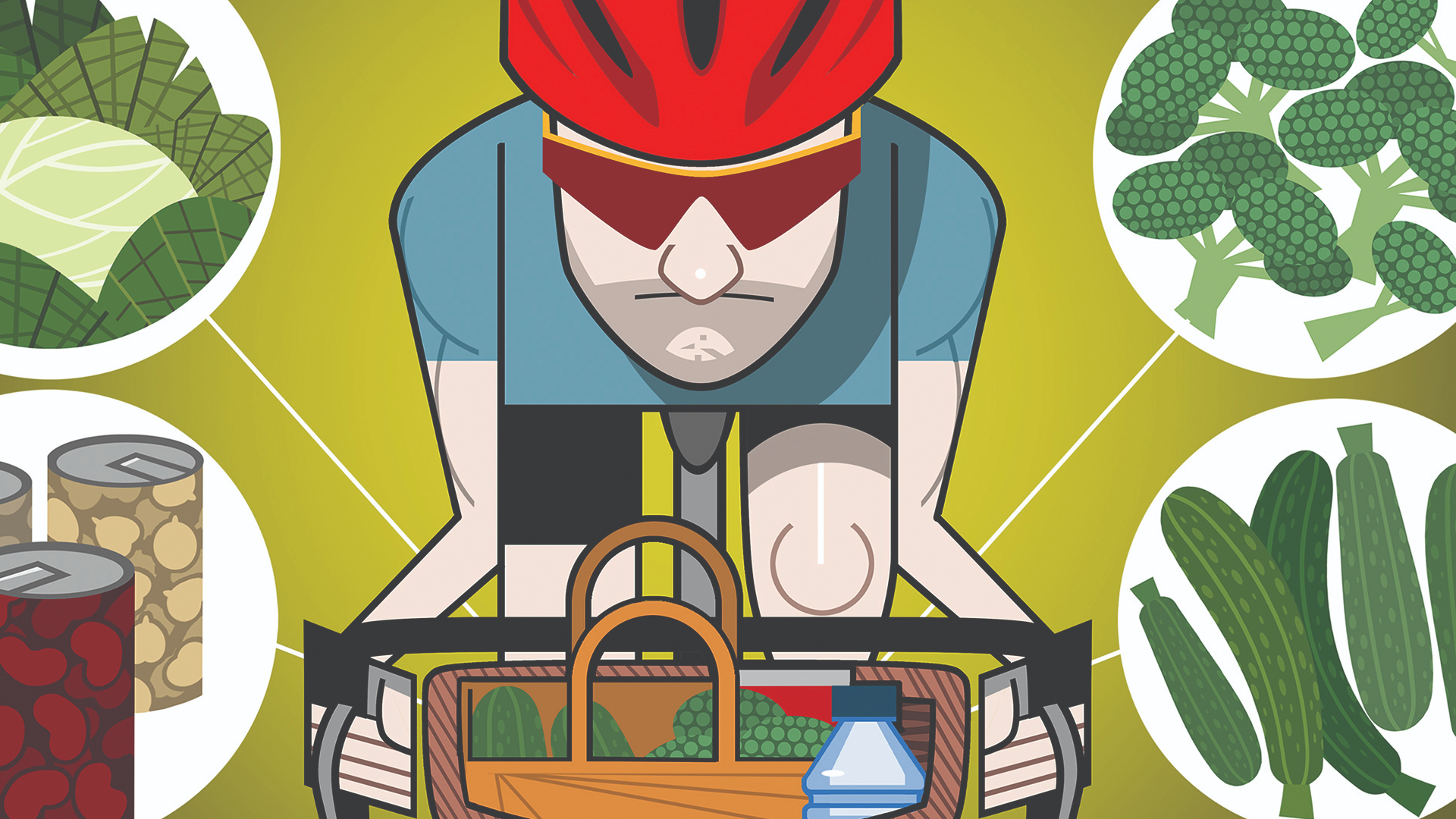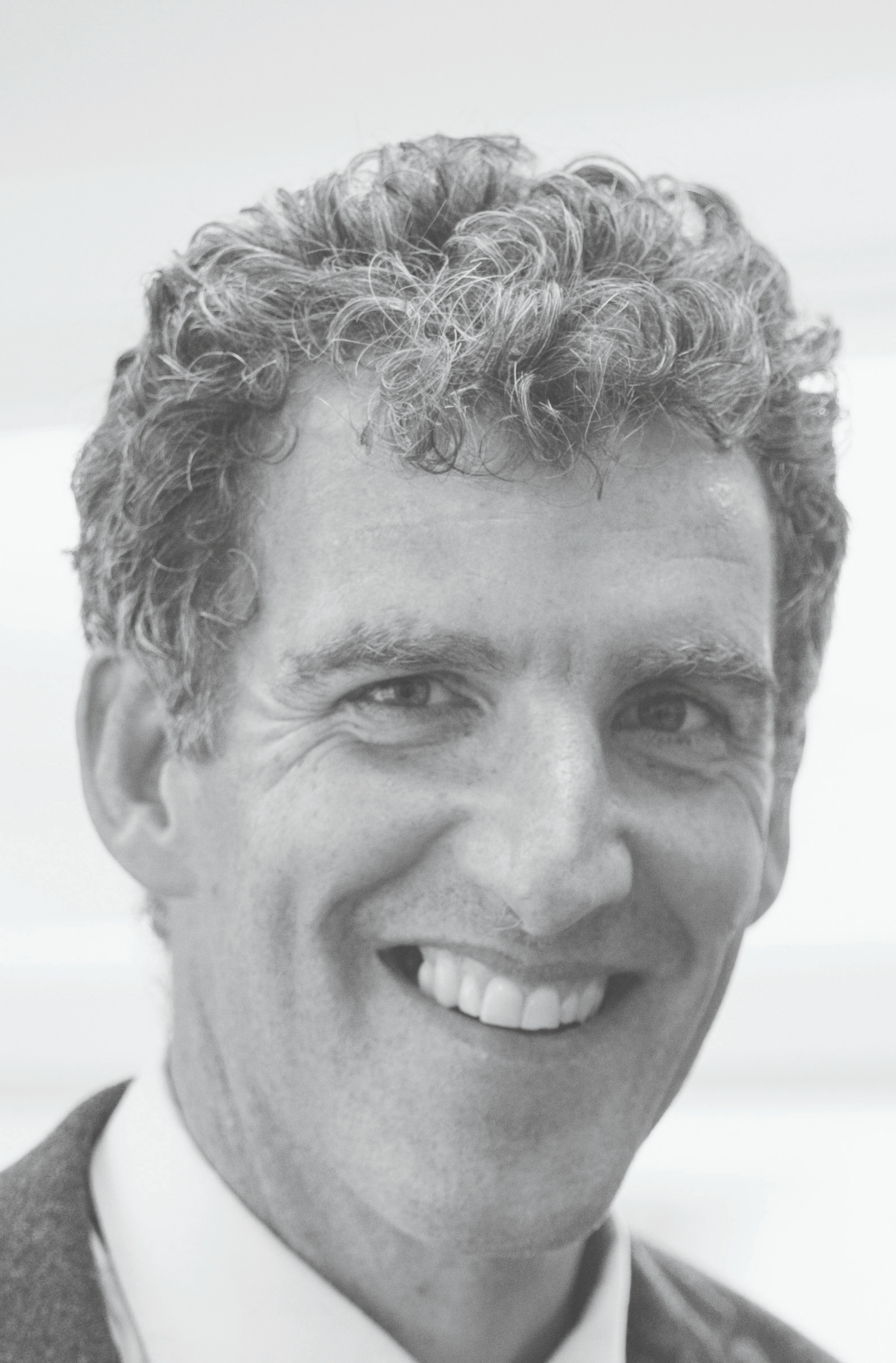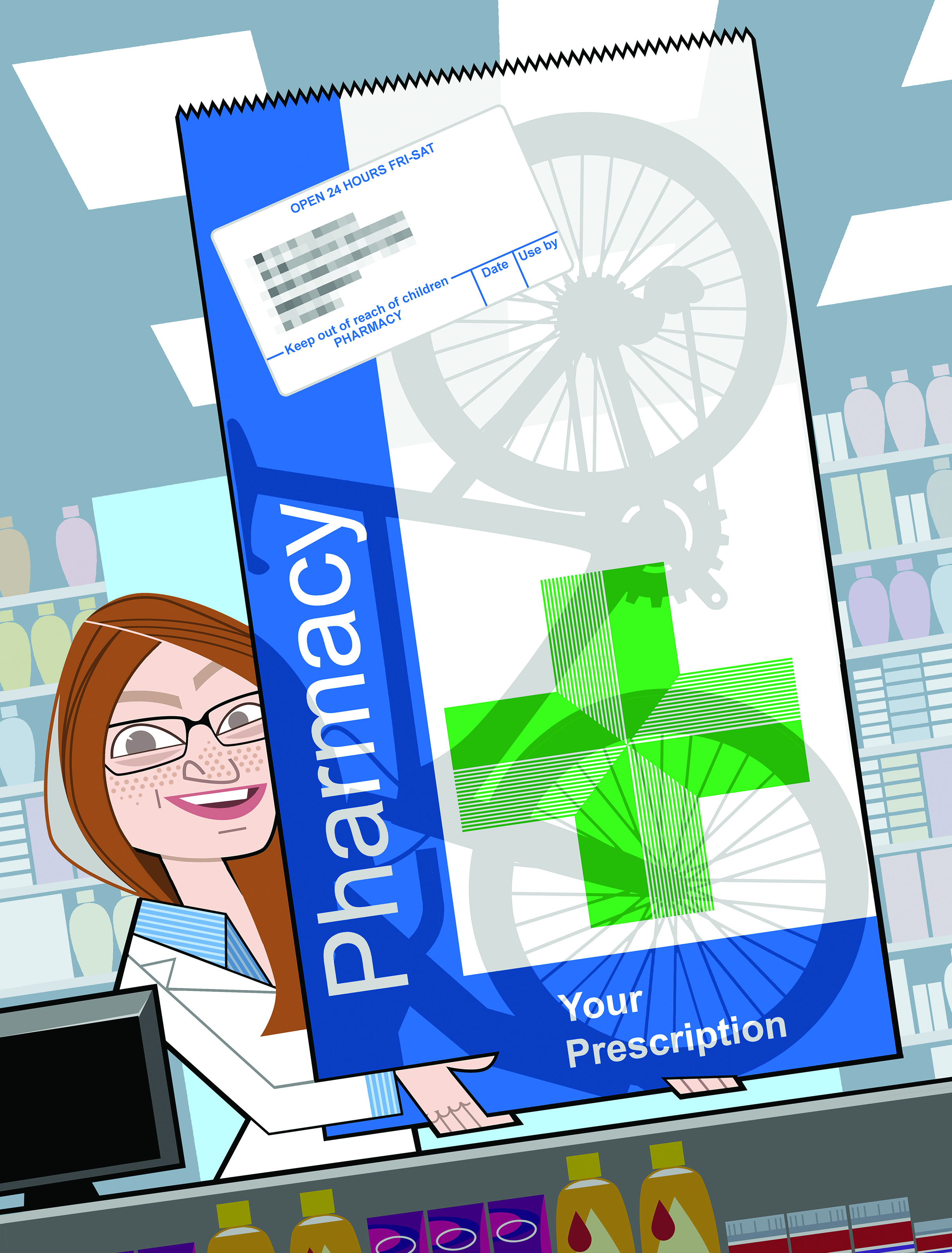The pedalling panacea: is cycling the best medicine?
As more and more GPs prescribe cycling to improve the nation’s health, Rob Kemp investigates whether getting on your bike really is the best medicine available


“Moving more will lead to a healthier nation, a reduced burden on the NHS, less cancer, heart disease and diabetes, as well as huge cost savings,” said Chris Boardman, former Olympic cycling champion at last summer’s launch of the Active Travel social prescribing initiative. In conjunction with NHS England and 11 local authorities, this latest pilot scheme enables healthcare professionals to prescribe activities such as cycling or walking to help address underlying root causes of a patient’s symptoms. And that’s just the start; social prescribing is much more than a doctor saying, “take more exercise – next patient please!” The GP’s referral kickstarts a process whereby a link worker – tasked with supporting the patient – helps them get access to hire bikes, cycling groups or local projects aimed at increasing activity or combating social isolation.
The aim is to reduce the strain on healthcare services and the reliance on medication by encouraging more physical activity and social cohesion. Unlike CW readers, those prescribed pedalling as a pill for their ills are often new to cycling or starting from a very low fitness level. But for all of us, knowing exactly how cycling helps combat conditions such as diabetes, high cholesterol and mental health issues enables us to harness its therapeutic powers. So, we spoke to those prescribing cycling – and those benefiting from it – to find out more.
Duelling diabetes
“I was diagnosed with Type 2 diabetes in my 50s,” explains Frank Frost, from Barnsley Yorkshire. “Although I underwent some treatment at the time, I chose to give up my HGV driver’s licence. I worked as a tanker driver carrying very dangerous chemicals and worried that my condition would make driving dangerous.” Diabetes UK figures show that 4.3 million people are now living with a diagnosis of diabetes, and more than 2.4 million people are at high risk of developing it.
Frost quit his job and moved to Sheffield, where he met Dr Ollie Hart, a GP and founder member of Move More Sheffield – a social prescribing scheme designed to make it easier for people to get active. “Dr Ollie is a mad-keen cyclist too,” says Frost. “He commutes by bike every day and even did his home visits by bike during the Covid pandemic.” Hart prescribed cycling to Frost to help manage and effectively cure his diabetes. “With his encouragement I eventually started a cycling club called the Chain Gang. My prescription to get on a bike, coupled with a low-carb diet, really turned things around for me. I lost seven stone in weight and ended my 10-year- long dependency on insulin injections.”
Now 75, Frost is a shining example of how a cycling prescription can divert patients away from the need for regular medication. “I’ve enjoyed every minute of my recovery from diabetes,” he says, “especially cycling in the Peak District close to my home. I enjoy the company and supporting friends in the group, including four other riders who are also diabetic.” According to the GP who first put Frost on the path to recovery, the best advertisement for social prescribing and cycling as a cure, are those patients who’ve benefited from it. “Frank is a great example, but he’s not unique in how cycling has helped change his life,” says Dr Hart. “It’s a growing trend: people like Frank are getting the hang of these non-medical activities, improving their own lives and then leading groups of others – I’m seeing it with people combating diabetes, mental health issues and even chronic pain.”
Men aged 35- 54 are almost twice as likely to have diabetes compared to their female counterparts. But according to Dr Jo Maher, NHS GP and, along with Ed Clancy, one of Sheffield’s Move More champions, the prescription of cycling could be a game-changer. “By referring people to the social prescribing hubs in Sheffield like Different Gear or Cycling For All, people will get access to bikes, learn-to-ride sessions and whatever support they need to get cycling,” says Dr Maher. “When it comes to diabetes and metabolic health, cycling activates the mitochondria in your cells. Basically, those active cells are chomping away at the energy that you’re producing and so reduce, if not reverse, Type 2 diabetes.”
Type 1 too
Reversing the symptoms of Type 2 diabetes through exercise and diet isn’t rare. But Type 1 diabetes is a very different beast. With Type 1, which is not related to unhealthy lifestyles, an autoimmune reaction knocks out the body’s ability to produce the hormone insulin, responsible for regulating the level of glucose (sugar) in the blood. However, cycling can go a long way to helping those suffering with Type 1 to manage it better and live life to the full.
Get The Leadout Newsletter
The latest race content, interviews, features, reviews and expert buying guides, direct to your inbox!
Dave McLeavy, 35, was diagnosed with Type 1 diabetes in 2016. A keen endurance cyclist before his diagnosis, he was determined to use the bike to help manage his condition – even if it meant extra close monitoring of his body’s reaction to long rides. “I wanted to prove that this life-altering disease isn’t an obstacle too great to overcome when pursuing fitness goals,” he says. “Having Type 1 means I’m at increased risk of heart disease and other kinds of chronic ailments. By continuing to ride I’m keeping my immune system strong.”
Cycling helps him control his blood sugar levels, McLeavy explains. “Diabetes means my blood sugars go through a lot of peaks and troughs. But by cycling I achieve a much greater degree of stabilisation. It flattens the curve, quite literally, reducing the amount of time I’m outside my target range, so it’s much healthier.” McLeavy was already hopeful that doing endurance exercise would help manage his diabetes, so he was pleased to have it confirmed when he sought the advice of healthcare professionals. “When you’re diagnosed with Type 1, you’re assigned a consultant and you get access to NHS dieticians. Those individuals, as well as other people in the medical profession I have spoken to, have been overwhelmingly supportive of my cycling.” McLeavy regularly undertakes fundraising rides including Coast-2- Coast for Diabetes UK. “Although the doctors have always exercised a level of caution [around extreme endurance rides], because I’ve always entered into events with the right planning and through monitoring of my blood sugar levels, they’re generally all for it.”

Sheffield GP Dr Ollie Hart
GP's view: ‘Doctors should be getting patients onto bikes’
While social prescribers and local authorities look to address the infrastructure barriers to cycling, Sheffield GP Dr Ollie Hart believes a change in thinking is crucial to the success of social prescribing too.
“It’s great that cycling groups and bike buddies are addressing some of the psychological barriers to people cycling. But from a medical point of view, I feel that a shift in mindset among the medical profession is needed too.”
“Typically, a GP usually has 10 minutes with a patient, during which time they’re encouraged to explain which medications are available and what might work best for that individual. With a mindset shift, that GP could spend time finding out what that patient enjoys doing. In the case of someone presenting with Type 2 diabetes, that could be walking or cycling. The GP then takes time to outline to the patient why activity can help and discusses what activity would best suit that individual.
“One area where I’ve seen dramatic improvements is in chronic pain conditions. People who have hip, knee, back or neck pain may think that rest is the best solution, but by getting people moving in a low-impact way – through walking and cycling – I’ve seen great outcomes for people who’ve been suffering with long-standing pain.”
Lowering cholesterol
The Active Travel pilot runs until 2025, but social prescribing – and the recommending of cycling by health professionals – has been taking place on an individual basis for many years and for a range of health conditions. “The use of e-bikes is proving to be especially helpful for those coming to cycling for the first time as an adult or taking it up as a means of combating a heart condition or weight management,” says Dr Maher.
For Dean Jacobs, 52, from Buckinghamshire, the prescription of cycling to combat a severe form of high cholesterol has transformed his life. Jacobs suffers from familial hypercholesterolemia (FH) – a hereditary ailment that keeps his cholesterol levels very high. In 2018, following several heart attacks linked to his condition, he underwent surgery at Harefield Hospital, home to the National Heart and Lung Institute of Imperial College London. “I started cycling as part of my post-op rehab. During my exit interview – six weeks after surgery – I asked the question that has ultimately shaped my whole life since: “What am I capable of fitness-wise? The head physio replied: ‘I’ve heard of someone with your condition who, less than a year after the exact same surgery, has run a marathon’.” For Jacobs that became a fitness target he wanted to beat.
In the six years since his surgery, he’s used his bike to help bring his cholesterol levels down, while his weight has gone from 98kg to 78-80kg. “I’ve been covering 8-12,000km per year – I’m just shy of 50,000km since jumping on a bike in 2018. Today my heart rate can sit at 160bpm for hours, and my resting heart rate is around 43bpm. Best of all, my cholesterol level is below four [mmol/L] – it was above 10 when I had my heart attacks.” Jacobs regularly rides charity events – including London-Brighton, London-Paris and LEJOG – raising over £10,000 for the British Heart Foundation and Alzheimer’s UK. “My dad had FH too, which led to him suffering from vascular dementia before his death,” Jacobs adds. “Along with cycling I do weight training to maintain muscle mass and boost my testosterone levels, and I steer clear of processed foods. I eat fish, poultry, veggies, pulses, legumes and drink lots of water. If I keep doing what I’m doing, then I shouldn’t get any cholesterol-based heart issues again.”
Mind gains

In some parts of the country, the NHS has trialled the prescriptions of active travel
Rolling out cycling as medicine
Cornwall Council, funded by Active Travel England, is among 11 pilot schemes experimenting with the social prescribing of active travel. “We received an £844,000 grant for this initiative, which is being managed by Public Health England in collaboration with the Department for Transport,” explains Natalie Russell, project manager. Government statistics indicate that physical inactivity is associated with one in six deaths in the UK and is estimated to be costing the UK £7.4 billion annually.
Using a behavioural change approach, health improvement practitioners (HIPs) support individuals and connect them with existing and new walking or cycling provision. “Participants can get free minutes on local e-bikes and access an e-bike loan,” adds Russell. “Additionally, they can connect with local cycling programmes like Sofa to Saddle and Bikeability. Regular check-ins by HIPs can help people identify and overcome barriers to active travel.”
Eligibility for this scheme includes being registered with a GP in one of the three pilot areas and seeking to improve mental well-being or physical health. The disabled, unemployed and those over 50 are also eligible to receive the support of a HIP and access the pilot’s 17 new local projects, supported with a grant by Cornwall Council to provide new cycling and walking provision. With a year left in the pilot, Russell is optimistic about meeting targets set with Active Travel England. “User feedback on infrastructure will inform local authorities’ transportation planning for long-term cycling facility improvements,” adds Russell.
Social prescribing is also being used to alleviate mental health issues and social isolation. According to the National Audit office’s most recent data, referrals to NHS mental health services in England rose from 4.4m to 6.4m in 2021-22. The mental health charity Mind has found evidence of strong links between exercise such as cycling and improved mental health, highlighting the social benefits of group exercise as a powerful enhancer of mental wellbeing. “The evidence is unequivocal: exercise prolongs life and increases healthy life expectancy, prevents cancer, cardiovascular disease, neuro- degenerative disease, diabetes, prevents and treats depression and anxiety, the list goes on and on,” says Dr Maher. “Prescribing a tablet for any one of these conditions will never have the same effect, and it’s hard to do right. It won’t help you cope with a bereavement, job loss, a new school or any other stressful life event – but exercise will.”
Duke Agyapong, 32, a London- based cyclist and Factor Bikes ambassador, believes the prescription of cycling to combat mental health issues could help many thousands in the same way it’s helped him. “Once I’m out on the bike, things begin to make a lot more sense, as your perspective changes and it’s easier to remain present,” says Agyapong. “Physical movement is essential for breaking out of the depression spiral.”
Agyapong also has weekly therapy sessions to help combat his mental health issues. “My depression and anxiety will lie to me, telling me that I am worthless, often making my existence seem like I am a bother to everyone when the truth is the opposite.” Cycling helps Agyapong to break out of the negative spiral. “It’s a sad and difficult thing, but I now have tools which stop me spiralling rapidly. When experiencing depressive episodes, I tend to ride for an hour or two – and riding with others helps massively. I learnt that people who ride with me enjoy my company.”
Though he hasn’t been prescribed cycling, Agyapong believes it is an effective intervention. “Whenever I’ve mentioned it to a mental health professional, they always recommend that I continue riding – or using my turbo trainer on those days when leaving the house is too daunting. Movement is the key, as physically changing your environment helps shift your mental health state too.”
Even so, Agyapong is not idealistic about cycling – he knows that riding can become a crutch. “It has to be done with care, as it could easily become an escape rather than a tool. My advice is to take it slowly, using exercise not to escape your thoughts but instead to create a safe space where you can think and feel.” How to ensure the ‘dosage’ remains safe? “Set yourself small but achievable progress targets. It isn’t easy. It’s taken me 15 years, but understanding my mental health is why I’m still here today.”
Social prescribing exercise such as cycling to combat mental and physical health conditions is gathering pace, with swelling support from health professionals. It’s hoped that the outcome of these latest trials will further confi rm that, when it comes to combating some of the UK’s biggest killers, your best medicine could be your bike.

Thank you for reading 20 articles this month* Join now for unlimited access
Enjoy your first month for just £1 / $1 / €1
*Read 5 free articles per month without a subscription

Join now for unlimited access
Try first month for just £1 / $1 / €1

Rob Kemp is a London-based freelance journalist with 30 years of experience covering health and fitness, nutrition and sports sciences for a range of cycling, running, football and fitness publications and websites. His work also appears in the national press and he's the author of six non-fiction books. His favourite cycling routes include anything along the Dorset coast, Wye Valley or the Thames, with a pub at the finish.
-
 Cycling's riders need more protection from mindless 'fans' at races to avoid another Mathieu van der Poel Paris-Roubaix bottle incident
Cycling's riders need more protection from mindless 'fans' at races to avoid another Mathieu van der Poel Paris-Roubaix bottle incidentCycling's authorities must do everything within their power to prevent spectators from assaulting riders
By Tom Thewlis Published
-
 Why Paris-Roubaix 2025 is proof that road bike tyres still have a long way to go
Why Paris-Roubaix 2025 is proof that road bike tyres still have a long way to goParis-Roubaix bike tech could have wide implications for the many - here's why
By Joe Baker Published